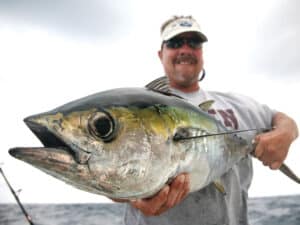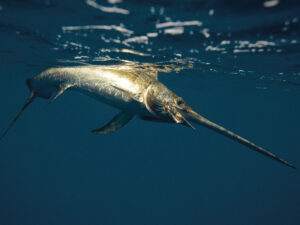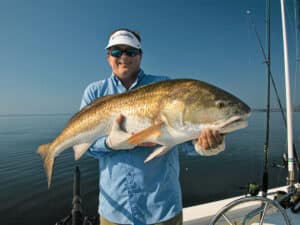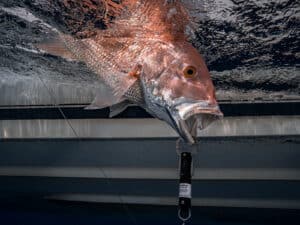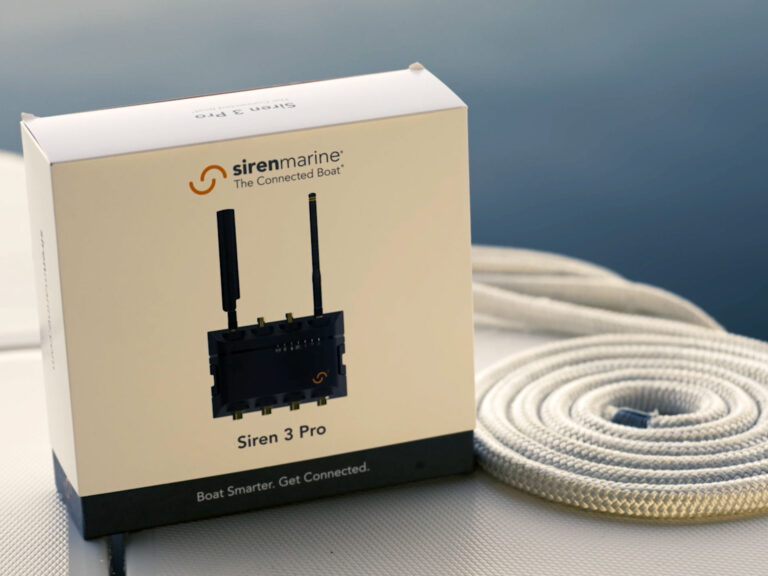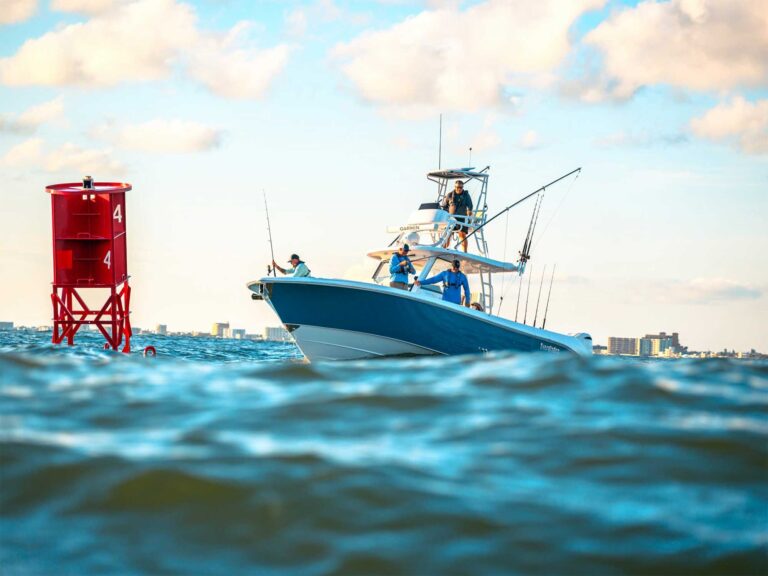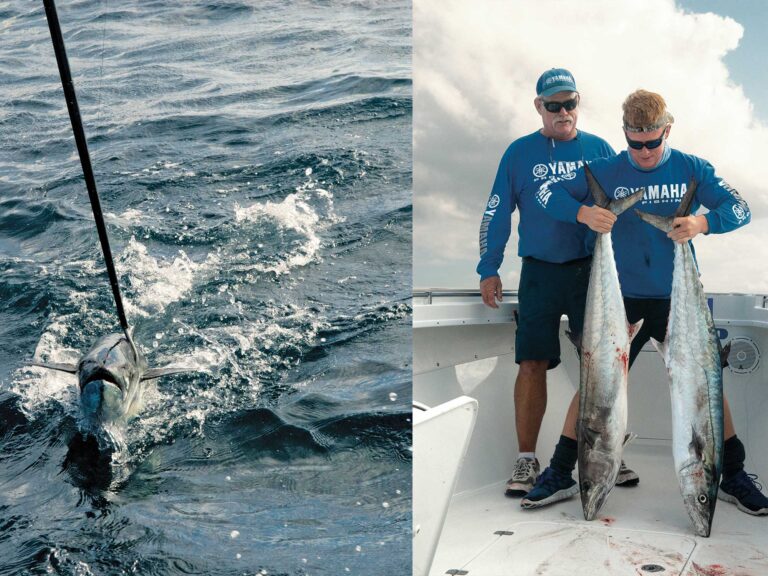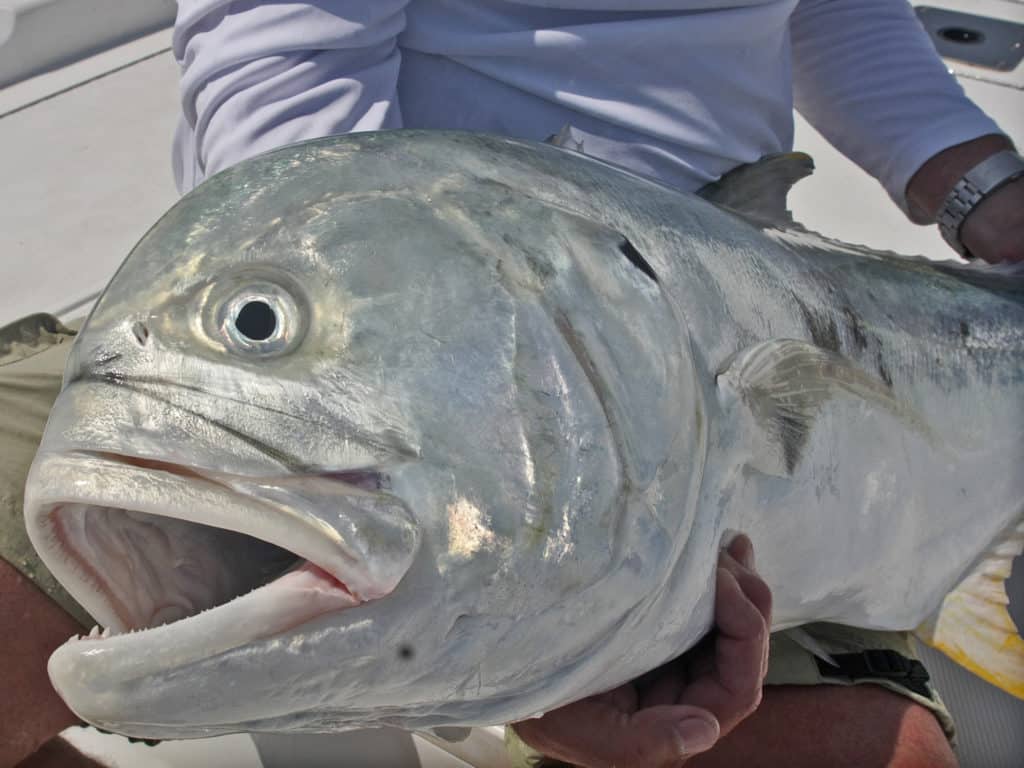
If you could hitch a jack crevalle to a specimen of equal weight of any of the more popular game fish species, the jack would easily tow the other every time. Anyone who has ever hooked small to medium jacks on fly will admit they are a spunky and fun bunch to catch. The big ones — those over 20 pounds — however, are a whole other animal. They are aggressive, fast, very powerful, and possess “tuna-like” stamina that will test both your fly tackle and your mettle, especially oceanside, where they have the room to run and deep water to dive down.
Big jacks are such tough opponents that few fish for them all day. Those who do are really bad hombres with the back, shoulders and forearms to take the extended punishment big jacks dish out. Keep in mind, nevertheless, that a couple of battles with such a formidable adversary will help you practice and perfect the fish-fighting techniques required to consistently land big game with a fly rod.
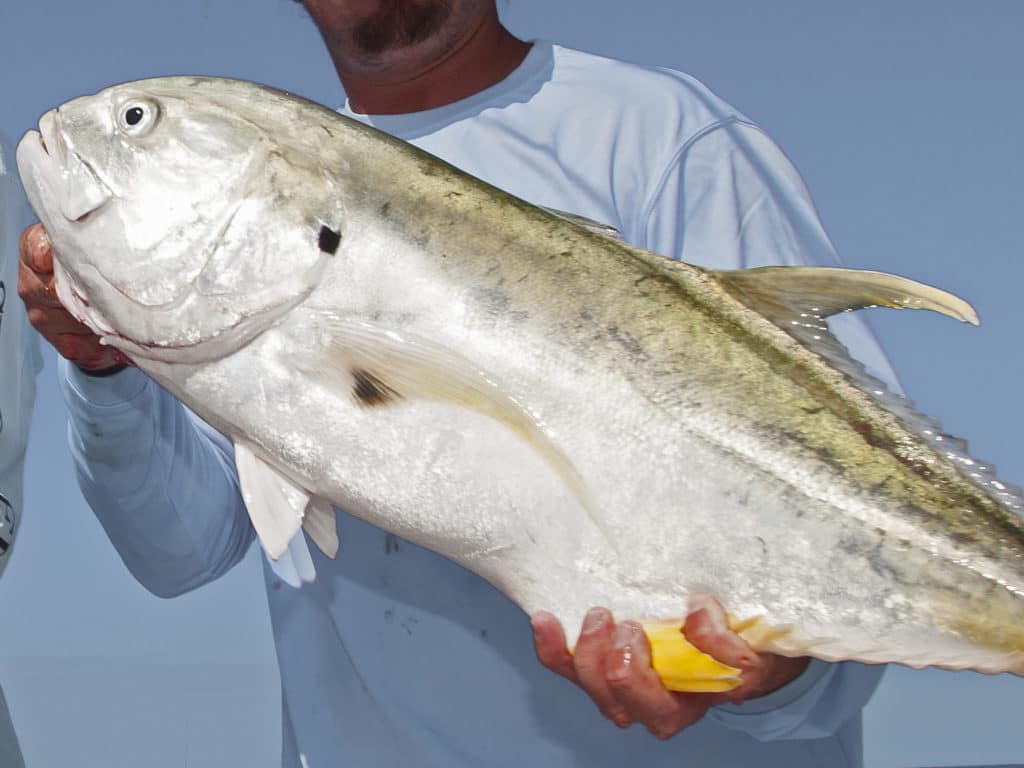
WHEN AND WHERE
Jack crevalle can show up in any body of water connected to salt water. The larger fish migrate along the coast of both the Atlantic and the Gulf of Mexico. Meanwhile, juvenile fish disperse north with the currents in the eastern Atlantic and migrate back to tropical waters prior to winter. During their travels, they follow food sources, almost exclusively baitfish, so they rove along the Intracoastal Waterway, and venture into coastal bays, estuaries and residential canals, even those with brackish and totally fresh water. Some of the best ambush points for anglers are along ICW and canal seawalls, which sizable jacks often use in their favor to pin their prey. When they corner a school of mullet or other baitfish, the mayhem is a spectacle sure to get any angler’s heart rate way up.
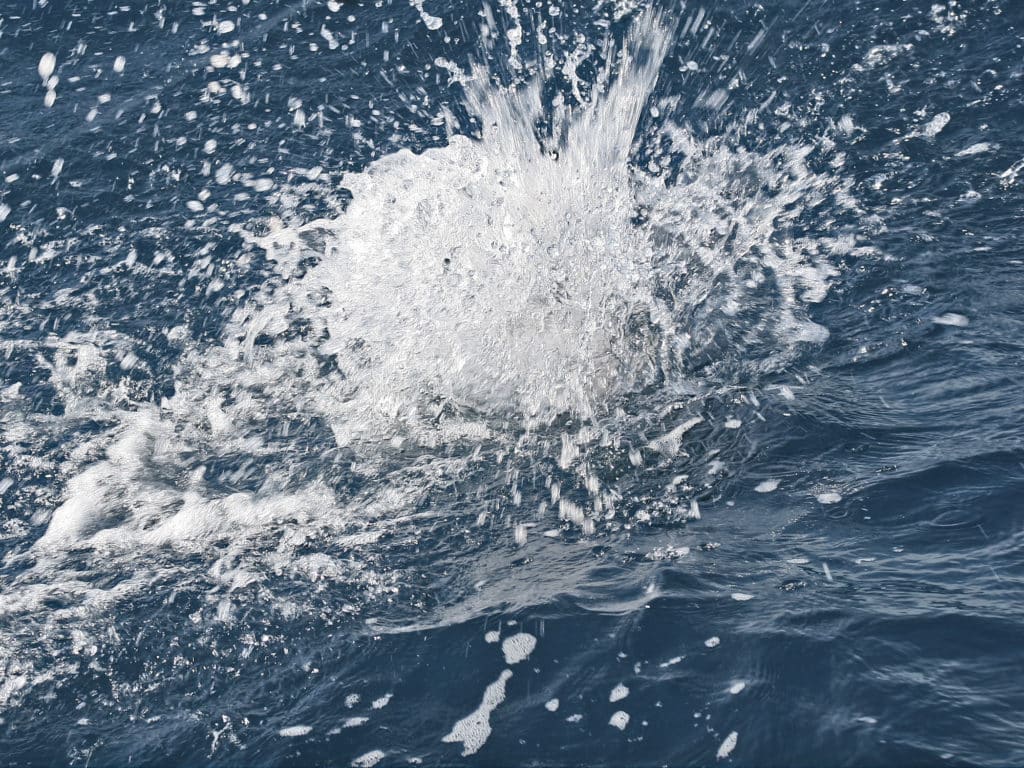
PACK MENTALITY
Schools of jack crevalle contain anywhere from 10 to hundreds of fish, and they often daisy chain like tarpon or oceanside permit do. Jack crevalle, however, tend to be much more aggressive eaters in the same scenario, and they competition for food among members of each pack is fierce.
Unless alarmed by your approach, these fish will fight over your fly or surface popper. And for a solid hookup, your job is to not take the offering away from them when they close in and blast it — sometimes clear out of the water — until one of the jacks finally gobbles it and speeds away. In other words don’t choke when a pack of big hungry jacks attack your fly. As simple as it may sound, controlling your excitement when a half dozen of these brutes climb all over each other to explode on your fly is not and easy task. But keeping calm during such frantic moments is frequently what makes the difference between success and near misses.
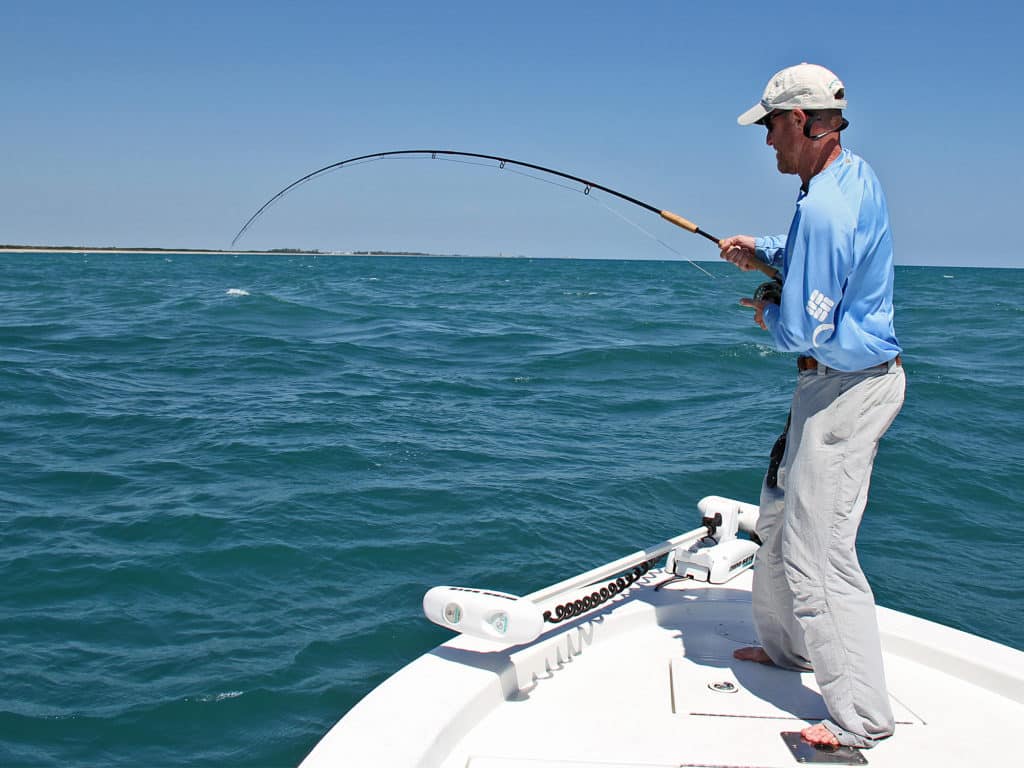
GEAR UP FOR BRUISERS
Though a 9-weight outfit is enough to handle jacks under 20 pounds reasonably well, the larger fish require bigger sticks to bring the fight to them. This is particularly true in deeper water, where hooked jacks first make a long run, but then slug it out deep, using to their advantage their broad bodies and the strong current you encounter in ocean inlets and passes. That’s why 10- to 12-weight rods are the way to go. If you think a 12 is overkill, just wait ‘til you hook a 30-pounder!
When the fish are at the surface, or no more than three feet below, a floating line is all you need. Opt for a saltwater taper or a similar line with an aggressive taper that has much of its weight in the last 30 feet so it loads your rod effortlessly for quick, short casts, and makes it easy to pick up and make another presentation with minimal false casting.
As for leaders, a 6- to 7-footer is long enough, and confection is simple, requiring only three or four traces of mono tapering from a 50- or 60-pound-test butt section to a 20-pound tippet (the rough lips of the bigger jacks are bound to fray through a lighter bite tippet). It does make sense to include a class tippet in your leader, a straight piece of 40-pound, for example, which won’t be a weak link yet it can still save your rod from breaking when a big jack make a sudden surge under the boat.
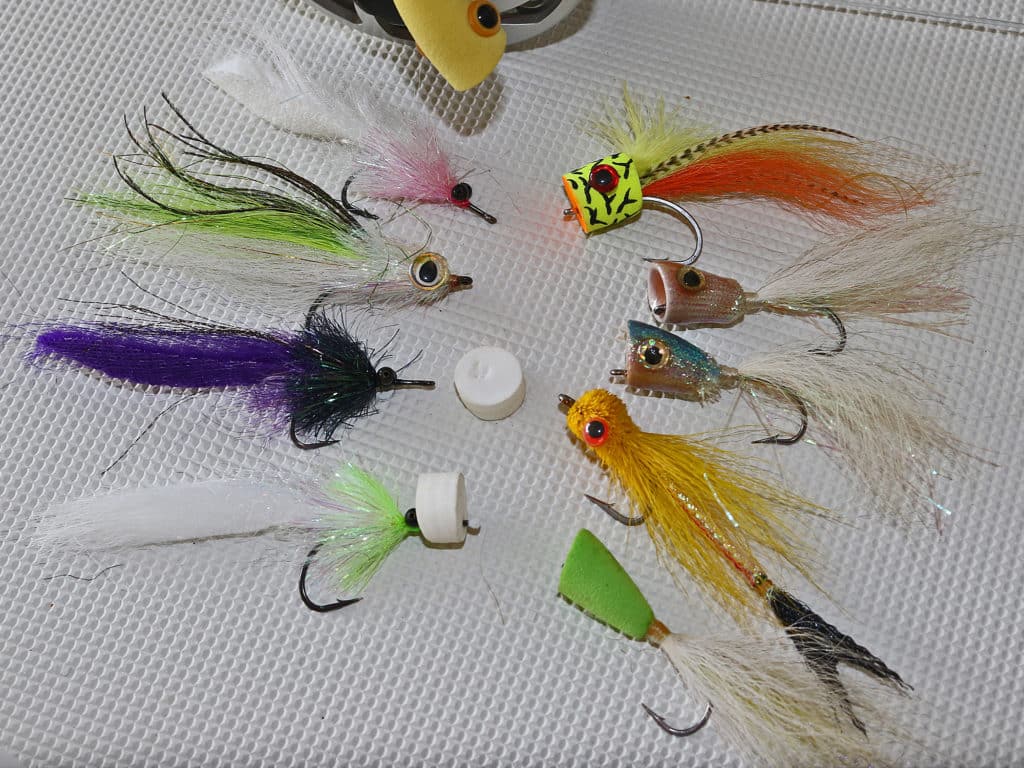
RECOMMENDED FLIES
Favorite poppers are fairly heavily dressed (tail materials) and tied on X-strong 2/0 and 3/0 hooks. They include the Bob’s Banger, Pencil Popper, Mylar Pencil Popper and an offering from Rainy’s Flies, the Bubblehead. If you tie your own poppers, choose closed-cell foam (light for its bulk) and tie in a stiff and long enough tail to help the popper plane through the air nicely. It’s tough to beat bucktail for this.
Top streamer patterns include Lefty’s Deceiver, Seaducer, and various generic mullet and bushy baitfish imitations in 5- to 7-inch lengths, with 2/0 and 3/0 hooks. All white, natural baitfish color schemes, yellow-and-chartreuse, and other bright combinations are top choices.
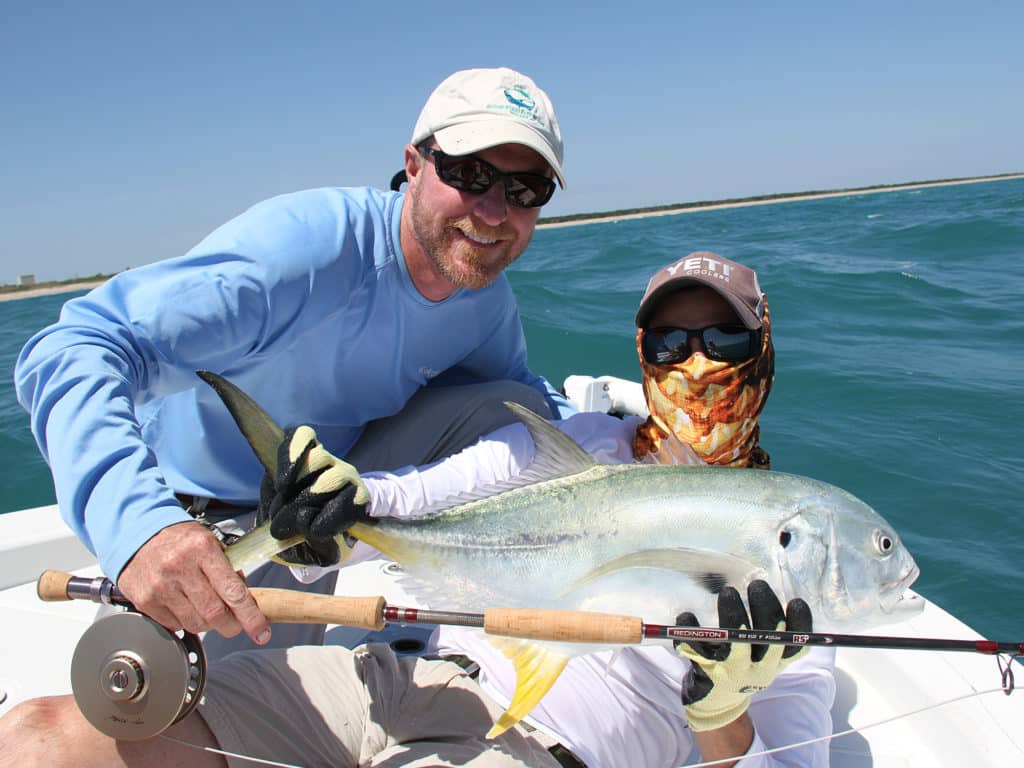
BE STEALTHY AND SCORE
Even though jacks are aggressive, a stealthy approach is still advised. Upon spotting a school at the surface, easiest on calm mornings, determine the fish’s direction and speed of travel, then gauge the effect of current and/or wind, if any, to position the boat. Casting with the wind makes tossing a big beefy popper or streamer easier. But try to get ahead of the moving fish whenever possible, and avoid chasing them down. Hull slap and the sound of the motor frequently makes the fish skittish, and sometimes even puts them down. Whether you see their dorsals or tails cutting the surface, spot their dark forms in the water, or detect the wakes big jacks push, get within comfortable casting distance by drifting or using a trolling motor. Today’s 4-stroke outboards may be quiet, but they can’t match electric power for the element of surprise.
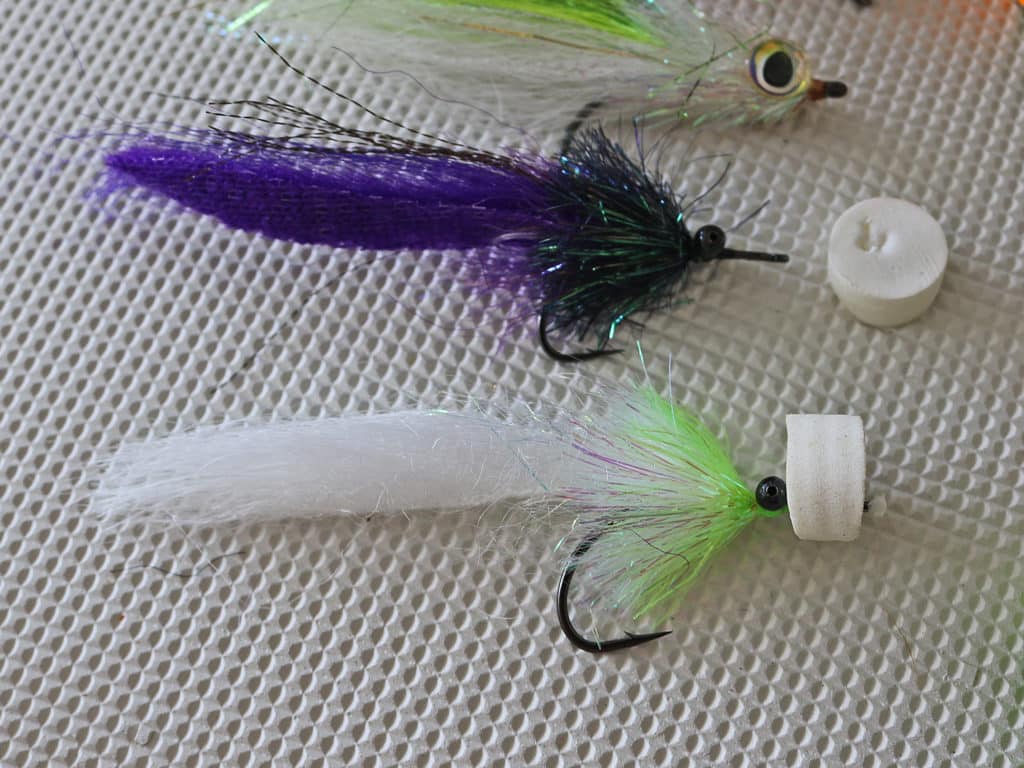
PROPER PRESENTATION
With jacks, you don’t need the precise presentations that fussy tarpon often require. If you get your fly in front of the fish, you’re normally in business. Of course, getting the fish’s attention and keeping it is crucial. Most veteran jack fans, me included, fish a popper because the noise and splash prove particularly appealing to these big, aggressive fish. Let’s just say, it brings the jack out in them. Just lead the fish by a few feet, then strip hard and quick enough create loud pops and keep the offering moving. Pause too long and even the hottest fish may lose interest and turn away. Keep your rod tip pointing at the fly at all times; don’t tilt the rod to the side as you strip. Otherwise, you wont have the angle for a good, strong hook-set when a fish makes a grab.
Although poppers draw the most interest and produce the more eye-pleasing strikes, they also yield more near misses, as charging fish tend to push them along the surface while attempting to eat. Just keep stripping and fight the urge to set the hook until you feel the weight of the jack. Streamers, such as big Deceivers, are often easier to cast against the wind than poppers, and also less challenging for jacks to grab a hold of.
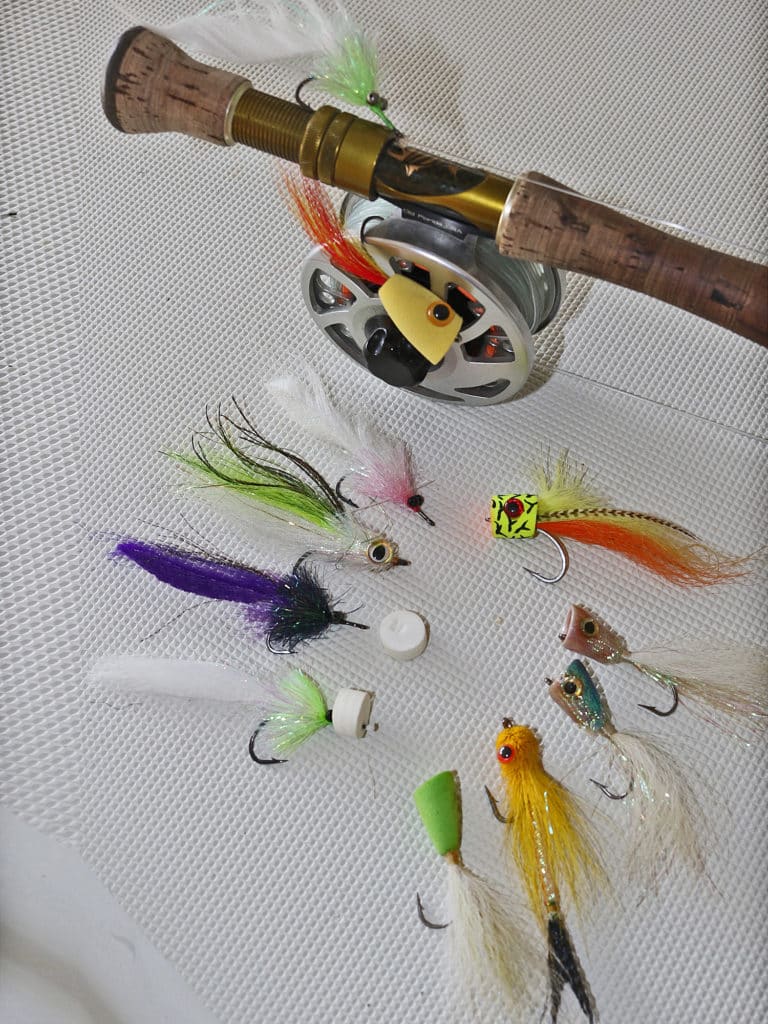
DOWN AND DIRTY
Make sure you have plenty of room to move around the deck once you hook up, and clear the casting deck and cockpit of any obstructions that could grab loose fly line and cost you fish. Upon the setting the hook, concentrate and getting the fish on the reel quickly. Big jacks normally make a sizzling first run and don’t give you much time to clear the fly line.
Fight big jacks with the butt of the rod, as you would any big, strong fish. Avoid deep bends of the rod as you pull, reel down and return the rod tip to an angle nearly straight to the fish. Unless you insist on being macho, don’t just fight a big jack from a dead boat. Instead, use the motor to cut the distance between you and the hooked fish as necessary to shorten the fight. Keep in mind that big jacks will sound again and again once they see the boat, so pick a fly rod with some lifting power.
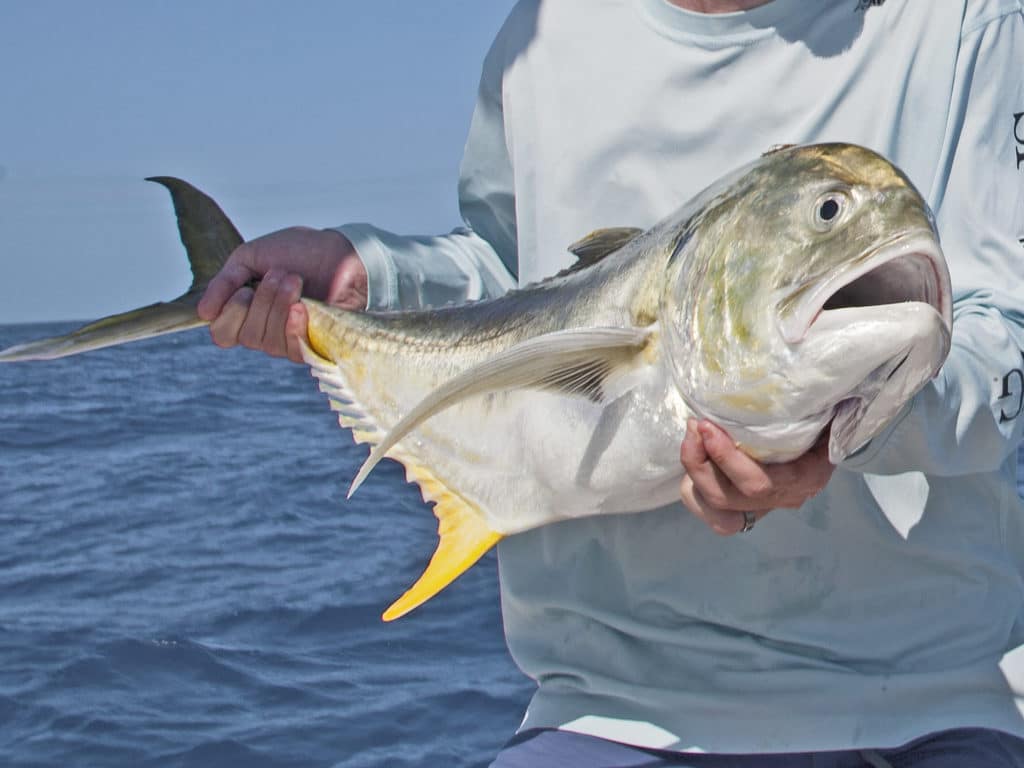
HANDLE WITH CARE
Big jacks, even after a long arduous battle, are difficult to handle. They have small teeth, but coarse lips and very strong jaws, so you don’t want to lip them. Also avoid grabbing the rear of the fish without gloves — those spines on the sides, near the tail, are pretty sharp. Jacks are hardy, but deserve careful resuscitation nonetheless. Just snap a quick photo and take the time to revive your catch for a successful release.

